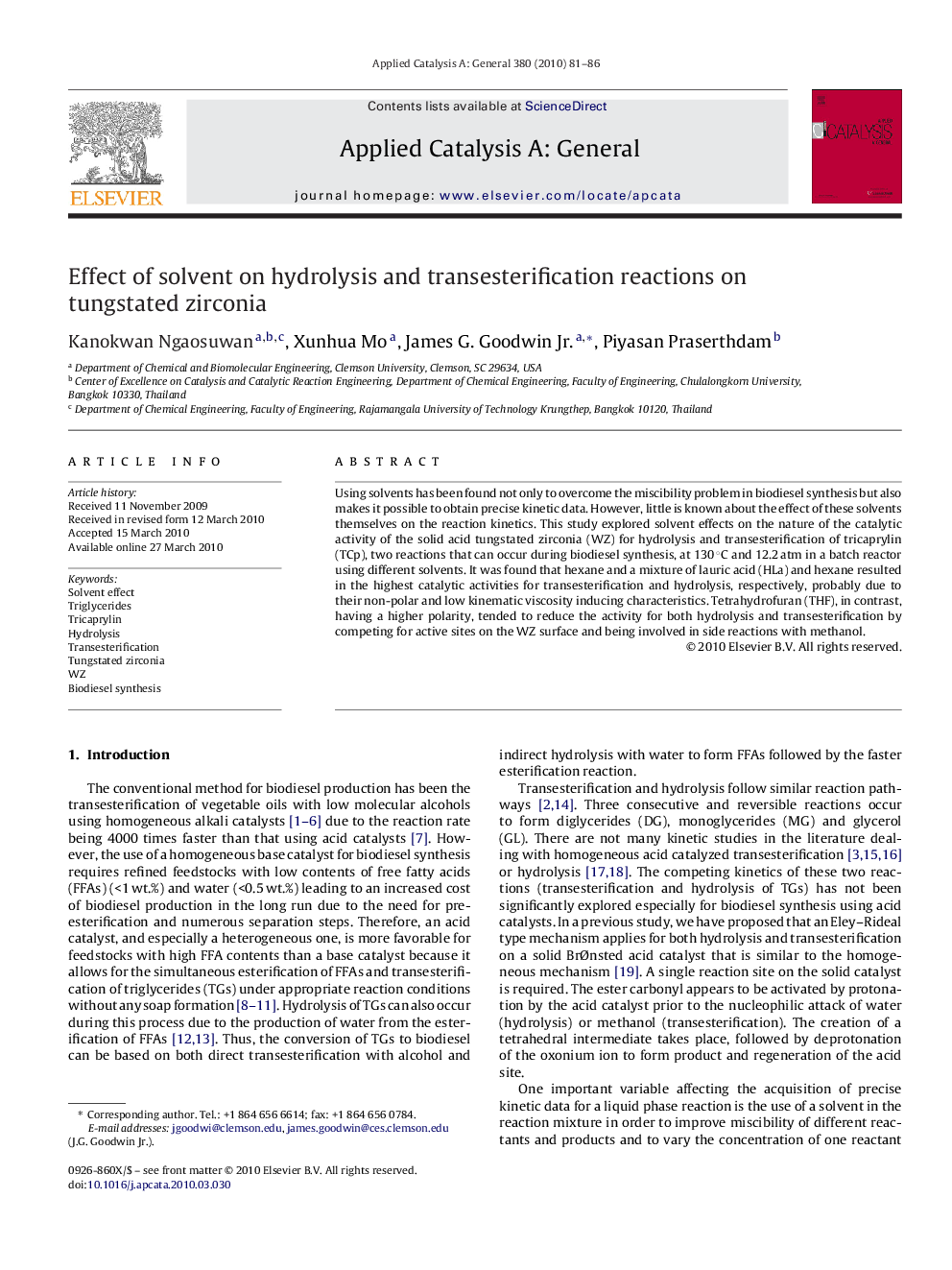| Article ID | Journal | Published Year | Pages | File Type |
|---|---|---|---|---|
| 41858 | Applied Catalysis A: General | 2010 | 6 Pages |
Using solvents has been found not only to overcome the miscibility problem in biodiesel synthesis but also makes it possible to obtain precise kinetic data. However, little is known about the effect of these solvents themselves on the reaction kinetics. This study explored solvent effects on the nature of the catalytic activity of the solid acid tungstated zirconia (WZ) for hydrolysis and transesterification of tricaprylin (TCp), two reactions that can occur during biodiesel synthesis, at 130 °C and 12.2 atm in a batch reactor using different solvents. It was found that hexane and a mixture of lauric acid (HLa) and hexane resulted in the highest catalytic activities for transesterification and hydrolysis, respectively, probably due to their non-polar and low kinematic viscosity inducing characteristics. Tetrahydrofuran (THF), in contrast, having a higher polarity, tended to reduce the activity for both hydrolysis and transesterification by competing for active sites on the WZ surface and being involved in side reactions with methanol.
Graphical abstractThis study found that hexane and a mixture of lauric acid (HLa) and hexane resulted in the highest catalytic activities on tungstated zirconia (WZ) for transesterification and hydrolysis, respectively, probably due to their non-polar and low kinematic viscosity inducing characteristics.The figure represents the effect of the use of solvents (33% of reaction mixture) on the catalytic activity of WZ for transesterification of TCp at 130 °C.Figure optionsDownload full-size imageDownload high-quality image (86 K)Download as PowerPoint slide
